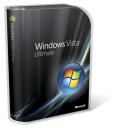This is really cool, Using Google Earth you can practice flying by turning it into a flight simulator. I tried it and it works! I spent my whole day cruising and enjoying this cool hidden Flight Simulator.
To enter the flight simulator mode, press Ctrl + Alt + A (Command/Open Apple Key + Option + A on the Mac). Once you have entered flight simulator mode for the first time, you can re-enter the mode by choosing Tools > Enter Flight Simulator. To leave flight simulator mode, click Exit Flight Simulator in the top right corner or press Ctrl + Alt + A (Command/Open Apple Key+ Option + A on the Mac).
Now you can use your keyboard to control navigation and other stuff that you would in a flight simulator game. You can even use a mouse or joystick. It won’t let hook up my Xbox 360 controller, Google Earth can’t recognize my Xbox 360 Contoller. I’ll try sometime this week if I can have a workaround it and a critical plus it that the Xbox 360 controller won’t let you map it’s button setting manually. To disable or enable mouse controls, left click (single click on a Mac). Once mouse controls are active, the pointer shape changes to a cross on your screen.
Download Google Earth and try it. For the list of command here’s the Flight Simulator Cheat Sheet




